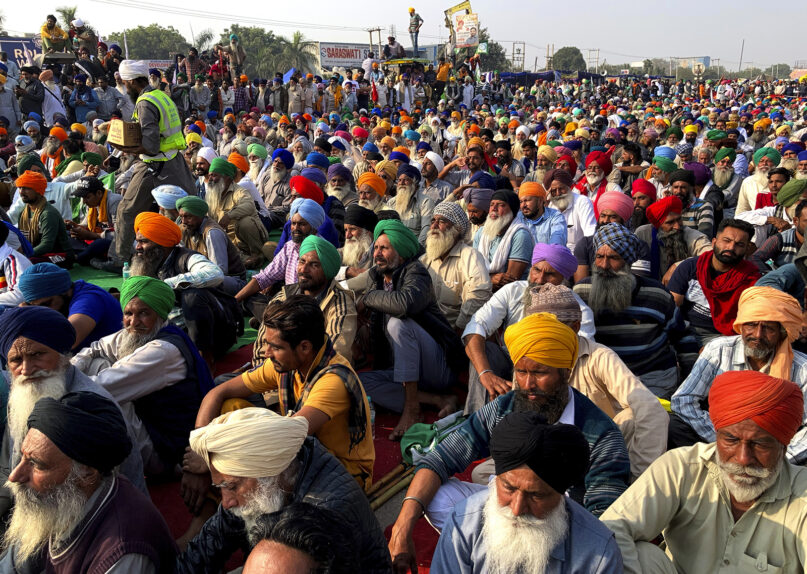(RNS) — Over the past few days, tens of thousands of farmers have made their way to India’s capital to protest new agricultural measures that favor large corporations and disadvantage everyday farmers. In response, the Indian government has deployed thousands of police officers and paramilitary troops. Tensions remain high.
The protests have been largely led and organized by Sikh farmers from the Indian state of Punjab, the country’s breadbasket. Tensions between Punjabi Sikhs and the Indian government have been high for decades, including decades-long violence that ravaged the state and left tens of thousands of civilians dead.
That violence, too, emerged from national resistance and demands for equal opportunities that Punjabi Sikhs led in the 1970s and 1980s. And in both movements, then and now, it is clear that their Sikh faith fuels and orients these efforts.
This should come as no surprise to anyone familiar with Sikh history and teachings. Protest is not new to Sikhs; rather, it permeates Sikh history, past and present.
Sikh memory recalls that Guru Nanak, the founder of the faith, was incarcerated upon standing up to the tyrant Babur when he invaded South Asia and massacred innocent people. Guru Nanak’s example established a precedent: Sikhs were to live fearlessly and stand up to injustice, no matter the consequences.
Subsequent Gurus were equally unafraid to speak truth to power and protest against injustice. When Kashmiri Brahmins complained to Guru Tegh Bahadur that they were being persecuted by Emperor Aurangzeb, Guru Tegh Bahadur decided to protest on their behalf. The Guru traveled to confront Aurangzeb, and he was detained, tortured and executed for doing so, along with a few of his devotees.
The Gurus called on Sikhs to follow their example to live as saint-soldiers (sant-sipahi) and to stand up for justice without regard for consequences. True love, they taught, was without fear, and true justice is compassionate and fierce.
This outlook helps explain some of the videos coming out of India, such as the one in which a Sikh man jumps from a moving truck to turn off a police-operated water cannon and then jumps back on to avoid capture.
But perhaps the most striking images coming out of the Indian farmer protests are those of Sikh protesters caring for the very officers who have been targeting them with tear gas and water cannons.
This, too, has its roots in Sikh tradition. During the Battle of Anandpur Sahib in 1704, Sikh troops observed one of their own tending to Mughal soldiers wounded in battle. The Sikhs reported what they saw to their leader, Guru Gobind Singh, who summoned this man to his court.
The Guru asked the man, Bhai Ghanaiya, if what they said was true. Bhai Ghanaiya confirmed it, stating that he served everyone indiscriminately because he had always been taught to see the divine light in all, whether friend or opponent.
The Guru lauded Bhai Ghanaiya for understanding and living by the Sikh teachings, and he encouraged all of his followers to learn from this example. This outlook resonates with Guru Arjan’s insight that when we see divinity in all, there is no place for enmity: “I see no strangers or enemies. I feel connected with everyone around me.”
There is much we can learn from these examples, past and present, that can apply to and enrich our own lives. Understanding these insights can also help us understand what is moving the farmers in Punjab to put themselves in harm’s way in the fight for justice.






